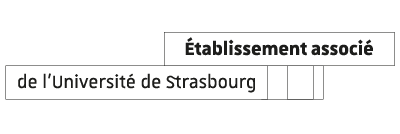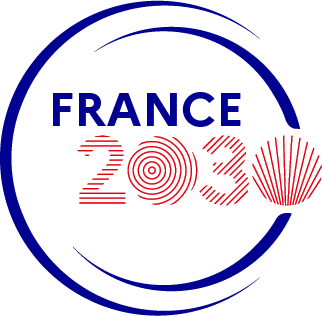Information importante
La page que vous consultez correspond à l'offre de formation 2023-2024.
Trouvez votre formation pour l'année universitaire 2024-2025
Civilisation GB
- Cours (CM) -
- Cours intégrés (CI) -
- Travaux dirigés (TD) 18h
- Travaux pratiques (TP) -
- Travail étudiant (TE) -
Langue de l'enseignement : Anglais
Niveau de l'enseignement : C1-Autonome - Utilisateur expérimenté
Description du contenu de l'enseignement
Code scolarité : LG20FM32
Broadening our understanding of the British world
During this last semester of the Licence, students will be invited to work on the history and culture of the British world differently. They will have the opportunity to work on specific areas and cultural developments of the British world that are lesser known to them.
T. Heron. Popular Music in Postwar Britain
Tuesday 8am-10am (start of course: 17/01)
This course aims to introduce students to the field of cultural studies in general and popular music studies in particular. It will address the history and main features of postwar popular music in the British Isles and, through the study of theoretical texts as well as primary sources, will examine how popular culture intersects with issues such as power, politics, youth, space, race, gender and sexuality.
Selective bibliography:
Brake, Mike. Comparative Youth Culture: The Sociology of Youth Cultures and Youth Subcultures in America, Britain and Canada. New York : Taylor and Francis, 2003
Chastagner, Claude. De la culture rock. Paris : Presses universitaires de France, 2016.
Clayton, Martin, et al. The Cultural Study of Music: A Critical Introduction. New York : Routledge, 2012.
Frith, Simon. Sound Effects: Youth, Leisure, and the Politics of Rock’n’Roll. New York : Pantheon Books, 1982.
Frith, Simon and Andrew Goodwin, eds. On Record: Rock, Pop, and the Written Word. Londres : Routledge, 2000.
Hall, Stuart and Tony Jefferson, eds. Resistance Through Rituals: Youth Subcultures in Post-War Britain. Londres : Routledge, 2003.
Hebdige, Dick. Subculture: The Meaning of Style. Londres : Routledge, 2006.
Longhurst, Brian. Popular Music and Society. Cambridge : Polity Press, 1995.
Pirenne, Christophe. Une histoire musicale du rock. Paris : Fayard, 2011.
Storey, John. Cultural Theory and Popular Culture: An Introduction. Harlow: Pearson Longman, 2011.
Storey, John. From Popular Culture to Everyday Life. New York : Routledge, 2014.
Turner, Graeme. British Cultural Studies: An Introduction. London, Routledge, 2009.
H. Ibata: The Golden Age of British Painting.
The 18th and 19th centuries are generally considered to be the golden age of British painting. As Britain became a leading economic power, the visual arts also began to flourish, with the creation of the Royal Academy in 1768, and the development of a distinctive and ambitious artistic identity. British painters of the period were not only seeking to demonstrate their ability to compete with the greatest masters of continental Europe, they were also responding to the political, intellectual and industrial revolutions of their time by exploring new pictorial forms and themes that reflected man’s evolving relationship with the world. This course will examine some of those responses through the works of artists like William Hogarth, John Constable, J.M.W Turner and the Pre-Raphaelites.
Recommended reading :
Brown, David Blayney et al. Late Turner: Painting set free. London: Tate Publishing, 2015.
Bruckmuller-Genlot, Danielle. Peinture et Civilisation Britanniques , Ophrys 2000.
Einberg, Elizabeth. Hogarth the Painter. London: Tate publishing, 1997
Hermann, Luke, Nineteenth Century British Painting, Giles de la Mare Publishers, 2000.
Lyles, Anne. Constable: The Great Landscapes. London: Tate publishing, 2006
Myrone, Martin. L’âge d’or de la peinture anglaise : de Reynolds à Turner, Paris : Réunion des musées nationaux, 2019.
Solkin, David. Painting for Money : The Visual Arts and the Public Sphere in Eighteenth-Century England. New Haven and London: Yale University Press, 1993.
Vaughan, William. British Painting: The Golden Age. London: Thames and Hudson, 1999.
Wood, Christopher. The Pre-Raphaelites. London: Weidenfeld and Nicolson, 1981
M.Hillion, After the Empire : independence and nation-building in India (1947-1992)
Thursday, 3-4.30pm
This course aims to introduce students to the history of decolonisation and post-colonial nation-building. It focuses on the case of India to better understand the relationship between newly independent countries, the Commonwealth and the world at large through the second half of the 20th century. What factors led to the independence of India in 1947 and what happened after the British left? How did Indian nationalism emerge and transform over four decades? Through our examination of primary and secondary sources, we will try to answer these questions by looking at foundational moments of India’s modern history such as the fight for independence, Partition, the Emergency, the transition from a socialist economy to a market economy and the rise of Hindu nationalism.
Selective bibliography:
- Blom Hansen, Thomas.The Saffron Wave : Democracy and Hindu Nationalism in Modern India. Princeton: Princeton University Press, 1999.
- Darwin, John. The Empire Project: The Rise and Fall of the British World System 1830-1970. Cambridge: Cambridge University Press, 2009.
- Guha, Ramachandra. India after Gandhi: The History of the World’s Largest Democracy. New York: HarperCollins, 2007.
- Khilnani, Sunil. The Idea of India . London: Penguin, 1997.Prakash, Gyan. Emergency Chronicles: Indira Gandhi and Democracy's Turning Point
- Princeton : Princeton University Press, 2019.
- Roy, Arundhati. My Seditious Heart: Collected Non-fiction. London: Penguin, 2019.
Broadening our understanding of the British world
During this last semester of the Licence, students will be invited to work on the history and culture of the British world differently. They will have the opportunity to work on specific areas and cultural developments of the British world that are lesser known to them.
T. Heron. Popular Music in Postwar Britain
Tuesday 8am-10am (start of course: 17/01)
This course aims to introduce students to the field of cultural studies in general and popular music studies in particular. It will address the history and main features of postwar popular music in the British Isles and, through the study of theoretical texts as well as primary sources, will examine how popular culture intersects with issues such as power, politics, youth, space, race, gender and sexuality.
Selective bibliography:
Brake, Mike. Comparative Youth Culture: The Sociology of Youth Cultures and Youth Subcultures in America, Britain and Canada. New York : Taylor and Francis, 2003
Chastagner, Claude. De la culture rock. Paris : Presses universitaires de France, 2016.
Clayton, Martin, et al. The Cultural Study of Music: A Critical Introduction. New York : Routledge, 2012.
Frith, Simon. Sound Effects: Youth, Leisure, and the Politics of Rock’n’Roll. New York : Pantheon Books, 1982.
Frith, Simon and Andrew Goodwin, eds. On Record: Rock, Pop, and the Written Word. Londres : Routledge, 2000.
Hall, Stuart and Tony Jefferson, eds. Resistance Through Rituals: Youth Subcultures in Post-War Britain. Londres : Routledge, 2003.
Hebdige, Dick. Subculture: The Meaning of Style. Londres : Routledge, 2006.
Longhurst, Brian. Popular Music and Society. Cambridge : Polity Press, 1995.
Pirenne, Christophe. Une histoire musicale du rock. Paris : Fayard, 2011.
Storey, John. Cultural Theory and Popular Culture: An Introduction. Harlow: Pearson Longman, 2011.
Storey, John. From Popular Culture to Everyday Life. New York : Routledge, 2014.
Turner, Graeme. British Cultural Studies: An Introduction. London, Routledge, 2009.
H. Ibata: The Golden Age of British Painting.
The 18th and 19th centuries are generally considered to be the golden age of British painting. As Britain became a leading economic power, the visual arts also began to flourish, with the creation of the Royal Academy in 1768, and the development of a distinctive and ambitious artistic identity. British painters of the period were not only seeking to demonstrate their ability to compete with the greatest masters of continental Europe, they were also responding to the political, intellectual and industrial revolutions of their time by exploring new pictorial forms and themes that reflected man’s evolving relationship with the world. This course will examine some of those responses through the works of artists like William Hogarth, John Constable, J.M.W Turner and the Pre-Raphaelites.
Recommended reading :
Brown, David Blayney et al. Late Turner: Painting set free. London: Tate Publishing, 2015.
Bruckmuller-Genlot, Danielle. Peinture et Civilisation Britanniques , Ophrys 2000.
Einberg, Elizabeth. Hogarth the Painter. London: Tate publishing, 1997
Hermann, Luke, Nineteenth Century British Painting, Giles de la Mare Publishers, 2000.
Lyles, Anne. Constable: The Great Landscapes. London: Tate publishing, 2006
Myrone, Martin. L’âge d’or de la peinture anglaise : de Reynolds à Turner, Paris : Réunion des musées nationaux, 2019.
Solkin, David. Painting for Money : The Visual Arts and the Public Sphere in Eighteenth-Century England. New Haven and London: Yale University Press, 1993.
Vaughan, William. British Painting: The Golden Age. London: Thames and Hudson, 1999.
Wood, Christopher. The Pre-Raphaelites. London: Weidenfeld and Nicolson, 1981
M.Hillion, After the Empire : independence and nation-building in India (1947-1992)
Thursday, 3-4.30pm
This course aims to introduce students to the history of decolonisation and post-colonial nation-building. It focuses on the case of India to better understand the relationship between newly independent countries, the Commonwealth and the world at large through the second half of the 20th century. What factors led to the independence of India in 1947 and what happened after the British left? How did Indian nationalism emerge and transform over four decades? Through our examination of primary and secondary sources, we will try to answer these questions by looking at foundational moments of India’s modern history such as the fight for independence, Partition, the Emergency, the transition from a socialist economy to a market economy and the rise of Hindu nationalism.
Selective bibliography:
- Blom Hansen, Thomas.The Saffron Wave : Democracy and Hindu Nationalism in Modern India. Princeton: Princeton University Press, 1999.
- Darwin, John. The Empire Project: The Rise and Fall of the British World System 1830-1970. Cambridge: Cambridge University Press, 2009.
- Guha, Ramachandra. India after Gandhi: The History of the World’s Largest Democracy. New York: HarperCollins, 2007.
- Khilnani, Sunil. The Idea of India . London: Penguin, 1997.Prakash, Gyan. Emergency Chronicles: Indira Gandhi and Democracy's Turning Point
- Princeton : Princeton University Press, 2019.
- Roy, Arundhati. My Seditious Heart: Collected Non-fiction. London: Penguin, 2019.
Compétences à acquérir
The objectives of the course are :
- to provide students with a deeper knowledge of specialised cultural fields and/or specific geographical areas.
- to foster the ability to write a critical document analysis which includes historical arguments.
- to enhance the ability to digest, select and organise material to produce a coherent and cogent argument.
- to develop the capacity to work on multiple sources, compare and contrast these sources and synthesize the information they provide.
Le travail d’apprentissage du commentaire de document est poursuivi, avec notamment travail de la problématisation.
Un travail sur des supports multiples pourra être proposé afin de produire une synthèse commentée d’un ensemble de documents.
- to provide students with a deeper knowledge of specialised cultural fields and/or specific geographical areas.
- to foster the ability to write a critical document analysis which includes historical arguments.
- to enhance the ability to digest, select and organise material to produce a coherent and cogent argument.
- to develop the capacity to work on multiple sources, compare and contrast these sources and synthesize the information they provide.
Le travail d’apprentissage du commentaire de document est poursuivi, avec notamment travail de la problématisation.
Un travail sur des supports multiples pourra être proposé afin de produire une synthèse commentée d’un ensemble de documents.
Contact
Responsable
Hélène Ibata
Pauline Collombier
Intervenants
Hélène Ibata
Pauline Collombier
LICENCE - Langues, littératures et civilisations étrangères et régionales














